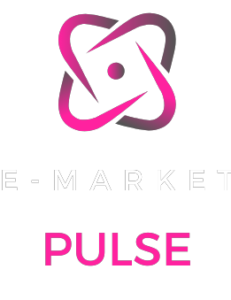

Navigating the Product Development Lifecycle from Concept to Creation: Mastering the Journey
Introduction
In the realm of creators, the journey from concept to creation is an odyssey marked by creativity, challenges, and meticulous planning. Product development is a dynamic process that transforms an idea into a tangible, market-ready offering. In this exploration within the Creators Corner, we delve into the intricacies of the product development lifecycle. From the spark of idea generation to the culmination of a successful launch, we guide creators through each stage, offering insights and advice to ensure a seamless and efficient journey.
Understanding the Stages of Product Development: A Comprehensive Guide for Creators:
The product development lifecycle is a roadmap, and creators are the navigators.* Let’s break down the stages, exploring the nuances of each phase and offering strategies for efficient management.
1. Idea Generation:
– *Nurturing Creativity*
The journey begins with a spark—an idea. Cultivate a creative environment. Encourage brainstorming sessions, draw inspiration from diverse sources, and be open to unconventional thinking. Document and refine ideas to lay the foundation for the journey ahead.
2. Market Research:
– *Informed Decision-Making*
Before diving into development, conduct thorough market research. Understand market needs, competitor landscapes, and consumer preferences. This data informs decisions, ensuring your product aligns with market demands.
GET EXCLUSIVE ACCESS TO OUR EXPERTS CREATOR'S CORNER TIPS AND ADVICE:
- Get AHEAD of the Competition.
- FREE Membership to Mia’s Weekly Insiders secrets.
- FREE tailored resources and gifts.
- PLUS qualify to receive personal email support.

* We respect your privacy. We will not spam you.
3. Conceptualization and Planning:
– *Blueprint for Success*
Develop a detailed concept and project plan. Outline product features, design elements, and functionality. Establish a timeline, budget, and resource requirements. A robust plan serves as a blueprint, guiding the development process.
4. Prototyping and Design:
– *From Ideas to Tangibility*
Create prototypes to visualize concepts. Refine designs based on feedback. Whether developing physical or digital products, this stage is crucial for refining functionality, user experience, and aesthetics.
5. Development and Testing:
– *Fine-Tuning and Quality Assurance*
Execute the development plan. Test rigorously at each milestone. Address bugs, usability issues, and functionality concerns. Iterative testing ensures a high-quality product that meets user expectations.
6. Manufacturing or Coding:
– *Physical or Digital Realization*
For physical products, initiate manufacturing. For digital products, enter the coding phase. Attention to detail is paramount. Collaborate closely with manufacturers or development teams to ensure accuracy and precision.
7. Marketing and Branding:
– *Creating Buzz*
Simultaneously with development, craft a marketing strategy. Develop a strong brand identity. Leverage social media, content marketing, and other channels to create anticipation and generate buzz.
8. Launch and Distribution:
– *Bringing Your Creation to the World*
Launch your product with a well-executed strategy. Coordinate distribution, whether through online platforms, retailers, or a combination. Ensure a seamless user experience from purchase to delivery.
9. Post-Launch Evaluation:
– *Learning and Iterating*
Evaluate post-launch performance. Analyze user feedback, sales data, and market reception. Identify areas for improvement and iterate for continuous enhancement.
Efficient Management Tips for Each Stage:
Efficiency is the heartbeat of successful product development. Here, we offer practical tips for creators to manage each stage effectively, maximizing productivity and minimizing hurdles.
1. Idea Generation:
– *Diverse Perspectives*
Encourage a diverse team for idea generation. Collaborate with individuals from various backgrounds and expertise. Diverse perspectives foster creativity and innovative thinking.
2. Market Research:
– *Data-Driven Decisions*
Leverage digital tools for efficient market research. Platforms like SEMrush, Google Trends, and industry-specific databases provide valuable insights swiftly, guiding data-driven decisions.
3. Conceptualization and Planning:
– *Agile Methodologies*
Embrace agile methodologies for flexibility. Break down the project into manageable sprints. Regularly reassess and adapt plans based on evolving requirements and feedback.
4. Prototyping and Design:
– *User-Centric Prototyping*
Prioritize user feedback in prototyping. Tools like InVision and Adobe XD facilitate collaborative design processes, allowing for real-time feedback and iterations.
5. Development and Testing:
– *Automated Testing*
Incorporate automated testing tools for efficiency. Tools like Selenium and JUnit streamline the testing process, ensuring comprehensive coverage and rapid identification of issues.
6. Manufacturing or Coding:
– *Effective Communication*
Establish clear communication channels with manufacturing or development teams. Regular updates, feedback loops, and collaborative platforms like Slack foster effective communication.
7. Marketing and Branding:
– *Pre-Launch Campaigns*
Start marketing early with teaser campaigns. Platforms like Mailchimp and Hootsuite assist in scheduling and managing pre-launch content, building anticipation.
8. Launch and Distribution:
– *E-commerce Platforms*
Opt for efficient e-commerce platforms for digital products. Platforms like Shopify and WooCommerce provide user-friendly interfaces and streamline the online purchasing process.
9. Post-Launch Evaluation:
– *Analytics and Feedback Loops*
Implement analytics tools like Google Analytics. Establish feedback loops through surveys and customer reviews. Continuous monitoring enables swift adjustments and improvements.
Conclusion: Your Journey, Your Masterpiece
The product development lifecycle is a canvas, and creators are the artists painting their masterpieces. By navigating each stage with intention, creativity, and efficiency, creators can transform ideas into tangible, successful products.
MORE LIKE THIS...
Bringing you the latest information, ideas, products and services for your E-commerce business.
Copyright 2024 E-Market Pulse
Contact Us
We may receive compensation from partners listed through affiliate partnerships, at no cost to you. This doesn’t influence our ratings, and the opinions are our own
Subscribe to our Newsletter
Get updates on products and services specially targeted to help you succeed.
